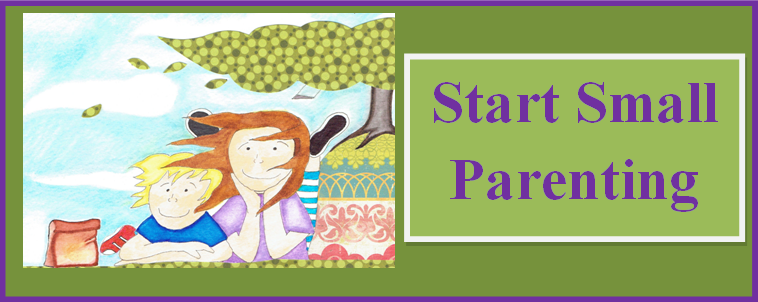“You made me lose my temper.”
“What were you thinking?”
“Don’t be a baby.”
“Your brothers do what I ask. Why can’t you?”
Words have power. How we speak to our kids and what we say affects our connection to them.
Unconscious patterns often arise in parent/child relationships. No matter the age of the child, parents can get into a trap of using disrespectful words when they are upset or trying to change a behavior.
Five Red Flag Statements
- Labeling
Harmful:
“Bad girl.”
“She’s shy.”
“He’s a difficult child.”
If you label a child as a “baby” or “difficult child,” he is likely to believe it’s true. Children process what others tell them about who they are. Labels can have a lasting effect on behavior, personality, and self-esteem. Sometimes parents aren’t aware that a label attacks a child personally. For example, “You are so messy,” is a negative label that reinforces the idea that the child is a messy person.
Helpful:
Label the behavior, not the child. Keep the focus on actions and desired outcomes as well as positive attributes.
“Clothes on the floor belong in the hamper.”
“Each picture you make shows me how much you like to draw.”
- Perfecting
Harmful:
“If you tried harder in practice, you might get that goal.”
“Why can’t you potty in the toilet every time?”
“The sticker goes in that square.”
One main message of perfectionism is, “You’re not good enough the way you are.” Some parents even confuse their child’s identity with their own. If their child looks good, they look good – or even the opposite when failure occurs. Unrealistic expectations to excel can create low-confidence, anger, a sense of failure, or depression.
Helpful:
Adaptability and flexibility are much more important that the rigid qualities of perfectionism. When parents let go of high expectations or allow their child to see them make mistakes, they are providing a crucial developmental step. Focus on what went well with your children or the amount of effort involved instead of what could be improved.
“Looks like you really understood what I asked.”
“You spent a lot of time studying for that test.”
- Blaming
Harmful:
“Your brother would never do that.”
“You made me lose my temper!”
Blaming is when we vent our anger on someone else and make that person wrong. We move blame and responsibility away from ourselves and onto a targeted person. The justification is this: “If I put blame on someone else, then I don’t have to recognize or take responsibility for my own negative qualities.”
Helpful:
Examine family patterns of favoritism or placing blame on others. Model accountability for your own mistakes and weakness: “I didn’t mean to yell at you. I’m feeling tired and need to work harder on controlling my temper.”
- Shaming
Harmful:
“Why did you do that?”
“You know better than to climb on that! You naughty boy.”
“You do not hate your brother; don’t say such terrible things!”
Shame often contains both criticism and punishment. It can be obvious or subtle and is often used as a way to modify a child’s behavior. This includes making a child feel guilty, deficient, or “bad.” It can also include belittling, sighing, or rolling one’s eyes at the child. It is demoralizing and even destructive, causing fear in children and becoming a barrier for a healthy emotional life.
Helpful:
You never need to show a child she was wrong by punishing her or making her feel bad. This will shame the child. Giving a child the message that she needs to shift gears can be done by empathizing, redirecting an impulse, and setting a limit. That’s how she learns right and wrong.
Describe what you see and ask a question or offer a suggestion.
“I can see how mad you are at your sister. What happened?”
“Sometimes it’s hard to share. Next time we’ll put your special toys away.”
Instead of “You are a bad boy when you climb the counters” – how about “You love to climb. The counters aren’t safe. Where can we go to climb that’s safe?”
Instead of “Don’t be a baby,” – try “Everyone likes to be babied sometimes. You are my baby no matter how big you are. I can’t pick you up but we can snuggle on the couch.”
- Comparing
Harmful:
“All the other kids are able to do that.”
“Your brother has finished all his homework. Why can’t you finish yours?”
“That girl knows how to share.”
One of the common reasons for comparing children is to motivate them. It might seem helpful to hold up a sibling or friend as a great example: “Look how good Maya listens,” or “Luke’s using the potty already, so why can’t you?” But comparisons almost always backfire. Your child is herself, not Maya or Luke.
Judging children is another way of comparison. “She’s my peace-maker. The others are always fighting.” “My son is such a good eater. My daughter’s so picky.”
Comparing siblings encourages rivalry, harming the relationship between them. It’s natural for parents to compare their kids, using milestones or behavior as a frame of reference, but do this out of the range of children’s ears.
Helpful:
Focus on behavior.
Instead of “You’re listening better than your brother” – say “Your focus on listening to my voice has improved.”
Encourage current achievements: “Wow, you ran really fast toward the soccer ball!”
Each of your children has unique needs and personalities. Help them find their inner voice and specific approach to respectful behaviors by treating them as individuals.
| Category | Red Flag Statement | Respectful Statement |
| Labeling | He’s a difficult child. | He hasn’t learned to do that yet. |
| She’s shy. | She’s learning to be around people. | |
| You are a naughty girl. Give that back to your sister. | It looks like your sister is sad that you took the toy away. | |
| Perfecting | The sticker goes in that square. | You got the sticker on all by yourself. |
| Why can’t you go in the potty every time? | You’ve gone in the potty two times today! | |
| I was sure you would get the gold star. | Looks like you’re really trying to understand. | |
| Blaming | You made me lose my temper. | I didn’t mean to yell. I’ll work harder on controlling my temper. |
| It’s all your fault. | I can help you find a better choice. | |
| You are giving me a headache. | Doing as you’re asked will give me more energy to play with you. | |
| Shaming | How could you have done that? | Let me help you learn something new. |
| I can’t believe you’re afraid of the coat in the closet. | That coat seems scary to you. | |
| Good little boys don’t hit others. | I understand you’re angry, but what’s another way to ask for what you want? | |
| Comparing | Your sister does so much better in math. | Let’s make a plan to help with your math. |
| Why can’t you be more like _____? He doesn’t hit. | Focus on behavior. “Let’s practice gentle hands.” | |
| When I was your age… “ | Tell a story of what was hard (not how you did better). |

